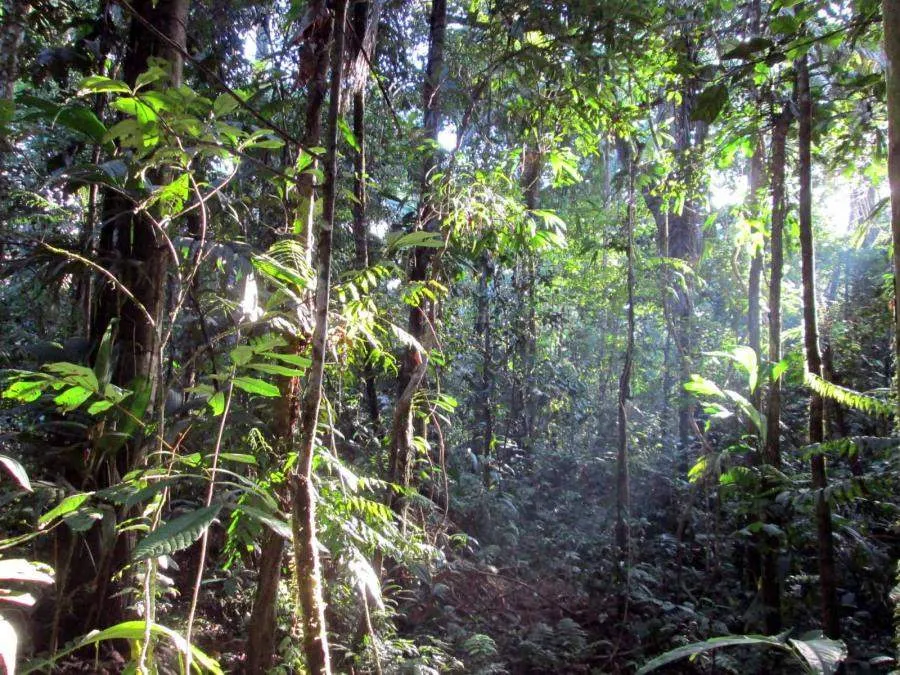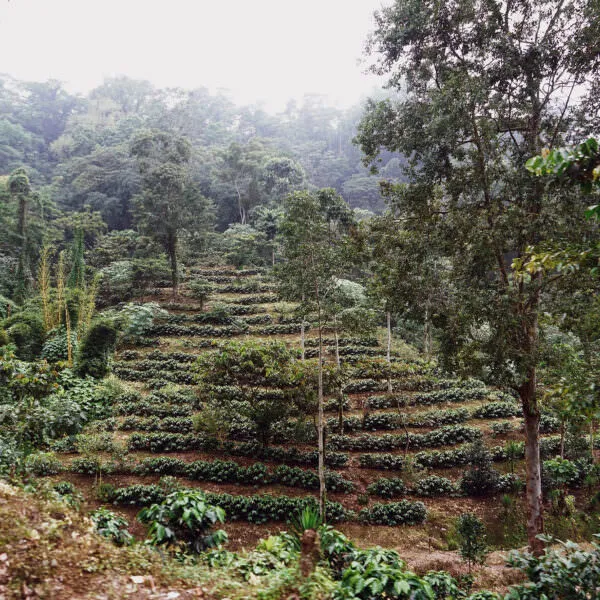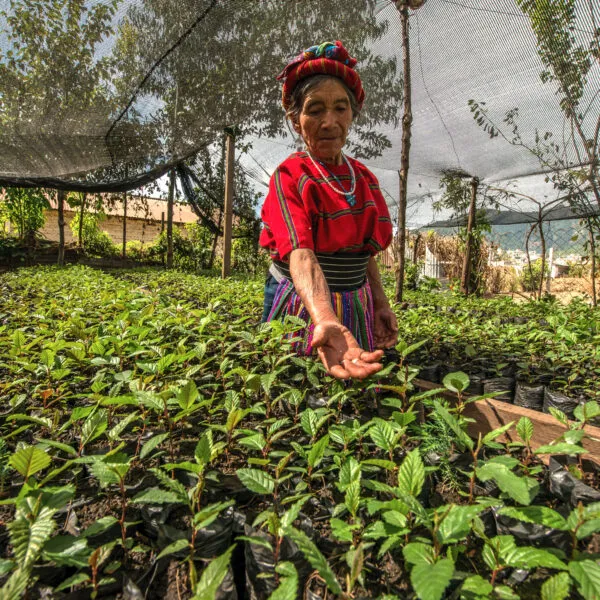Simply put, we cannot survive on this planet without forests. In a sense, they breathe for the Earth, absorbing carbon dioxide from our atmosphere, and producing the oxygen we require in return. And by storing that carbon, forests help to regulate the global climate, absorbing nearly 40 percent of the fossil-fuel emissions we humans produce.
Forests also provide fuel for cooking and warmth, medicinal plants, food, wildlife habitat, clean water, spiritual and cultural touchstones, and for many, the means to earn a living. Approximately 70 percent of terrestrial animals and plants make their homes in forests, while more than 25 percent of the world’s people—nearly 1.6 billion—rely on forest resources for their livelihoods, with 1.2 billion of them using trees to generate food and cash. The economic value of these ecosystem services has been estimated at $33 trillion per year, twice the GDP of the United States.
Sign up for useful tips to green your life and protect our planet.
Yet despite all that forests do for us, they continue to be sacrificed to unsustainable human consumption—at our own peril. Each year we lose 32 million acres (13 million hectares), 26 times the size of the Grand Canyon, or 60 acres per minute. To regenerate the resources we’re already consuming, we’d need 1½ Earths, yet our demand is still growing. No matter how you slice it, the math just doesn’t add up. Our current consumption levels cannot be sustained.
As long as there are human beings on this planet, there will be a demand for wood, pulp, and other forest resources, and there will be businesses that endeavor to meet that demand. Furthermore, those people who live and work in forests will always need to feed their families and put a roof over their heads; the stark inequities in our global economy increase the economic desperation that fuels illegal logging and poaching. The only realistic way to conserve our forests is to apply sustainable forest management practices—a conservation-and-livelihoods approach that the Rainforest Alliance has led since the late 1980s, and one that’s already proven successful on nearly half a billion acres of land around the world.
What does “sustainable forestry” actually mean?
For many, the term “sustainable forestry” may seem like an oxymoron. How can logging ever be sustainable when, by definition, it requires that trees be cut down? The complete answer is complex, but if we had to reduce it to one word, it would be “balance.” The hallmark of sustainable forestry, from a purely ecological perspective, is the extent to which forestry practices mimics natural patterns of disturbance and regeneration. Sustainable forestry balances the needs of the environment, wildlife, and forest communities—supporting decent incomes while conserving our forests for future generations. There are many practical steps that a community or business can take to protect the health and longevity of a forest while still profiting from the production and sale of timber and other forest products, such as nuts, fruits, oils, and plants.
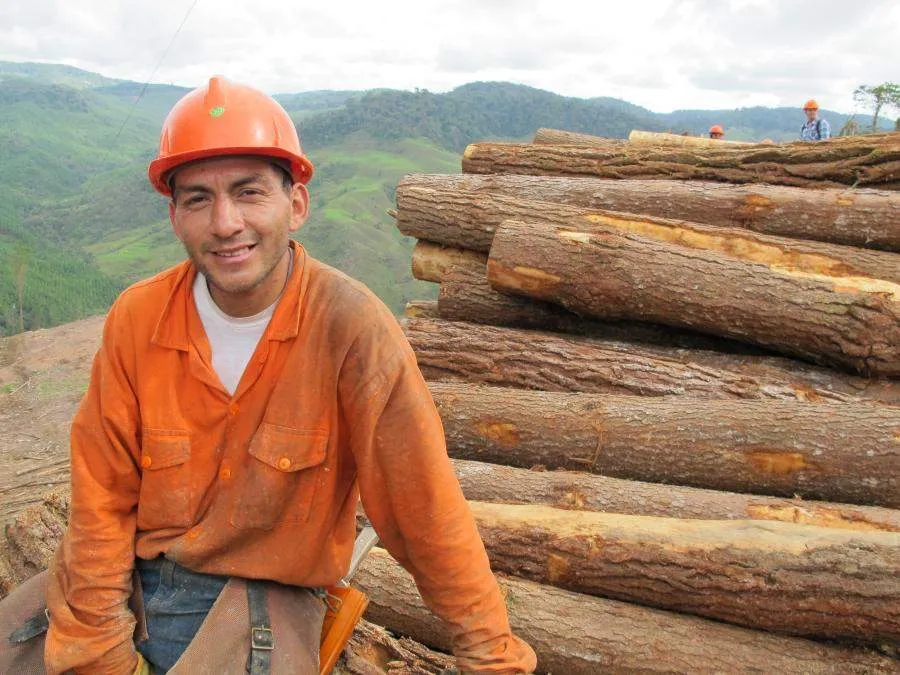
In 1993, the Rainforest Alliance co-founded the Forest Stewardship Council (FSC), an international body that develops and maintains the most globally respected standard for managing forests, and we certify forestry businesses that meet the standard’s strict environmental, social, and economic criteria. We also award FSC Chain-of-Custody (CoC) certificates for the tracking of certified wood and other raw materials from forest to manufacturer to store shelf, confirming that an item that bears the FSC and Rainforest Alliance Certified trust marks actually contains certified products. These seals allow conscientious consumers an easy way to spot and support responsible producers.
Beyond sustainable forest certification, the Rainforest Alliance also provides training to forest communities around the world in methods designed to conserve forests, safeguard wildlife, protect workers, and—critically—to support their efforts to earn a living as responsible forest stewards. We link them to buyers who are interested in sourcing certified forest products; offer training in business skills, such as bookkeeping and other organizational tasks; and assist them in obtaining financing so that they can reinvest in their enterprises and continue to prosper. The Rainforest Alliance is the leading FSC certifier of forests managed by communities and indigenous groups.
The global FSC standard is comprised of ten principles that cover a range of environmental, social, and economic criteria. Although there are regional variations in how the standard is applied—to address the unique needs of forests, peoples, and economies in different parts of the world—the basic tenets of sustainable forestry remain the same:
Establish protected areas & conserve biodiversity
A forest’s biodiversity—including its water resources, soils, plant species, and animal populations—must be conserved. This means that forest managers minimize erosion and protect waterways; avoid the use of chemical pesticides; properly dispose of waste; conserve native tree species and maintain genetic diversity on their land; set aside part of their properties as protected areas where logging is prohibited (including forestland that is steeply sloped, provides habitat for critical wildlife species, and/or serves a culturally or spiritually significant function in the local community); and take other steps to ensure the integrity of the forest. Researchers have found that UNESCO World Heritage Sites and other protected areas benefited from having FSC/Rainforest Alliance Certified forestry businesses as neighbors. And separate studies in Africa and Asia found that certified enterprises did a better job than their noncertified peers of protecting great apes and other mammals.
Prevent forest conversion & protect High Conservation Value Forests (HCVF)
The FSC standard requires that forest managers protect natural forests against deforestation, reduce the risk of fires, and take particular care to protect “high conservation value forests.” The latter term is used to describe forests that contain significant concentrations of biodiversity; are located in or include rare or endangered ecosystems; are critical providers of ecosystem services; or are fundamental to meeting the basic needs or defining the cultural identity of forest communities. In Guatemala’s culturally and ecologically significant Petén region, researchers found that over a 20-year period, actively managed FSC-certified forests experienced substantially lower rates of deforestation than nearby protected areas, and forest fires only affected 0.1 percent of certified land area, compared to 10.4 percent of protected areas.
Have a management plan & harvest accordingly
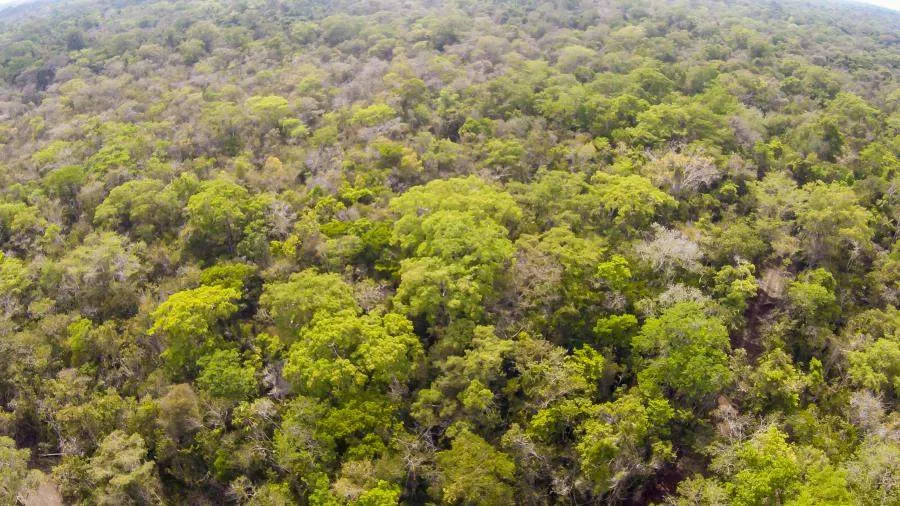
Logging activities can take many forms, from selective harvesting to limited, small-scale clear-cutting, which, in temperate forests, can mimic natural disturbances such as fires or landslides. To become FSC-certified, forestry operations must put into place a clearly mapped management plan that specifies the number of trees that can be harvested per acre, and the frequency at which this can occur, based on the growth and regeneration rates of the species found in that ecosystem. The goal is to harvest in such a way that allows these species the chance to regenerate, and ensures that the forest’s overall ecological health is maintained, restored, or even enhanced.
Tree plantations have a role to play
Sustainable forestry focuses on keeping natural forests standing, and only in extremely limited cases may a tree plantation that resulted from forest conversion after November 1994 even apply for FSC certification. However, the establishment of plantations on already deforested or degraded land can improve the health of an ecosystem and help to meet some of the demand for forest products, taking pressure off of natural forests. To earn FSC certification, plantations must operate according to a management plan that promotes the protection, restoration, and conservation of natural forests.
Use reduced-impact logging techniques
Many people associate logging with the image of a bulldozer leaving behind a denuded landscape, but it is possible to harvest timber without causing collateral damage to other parts of a forest. Reduced-impact techniques allow loggers to fell and extract trees in a manner that reduces damage to other trees in the stand. This approach also minimizes erosion, waste, and carbon emissions.
Train employees & keep them healthy
A forestry business that does not protect its workers is not only unethical, but also unsustainable. Well-trained and healthy employees are essential to ensuring that these enterprises function safely and efficiently. In an examination of community-run forestry businesses in Brazil, certified enterprises did a far better job of protecting their workers than their noncertified peers. Members of certified enterprises were four times more likely to have taken part in a safety course; 94 percent of these businesses offered regular medical exams to their workers; all of the certified enterprises properly washed and stored their protective gear; and 100 percent—four times as many as noncertified enterprises—offered medical attention to their employees when they were injured on the job.
Respect local communities & foster economic development
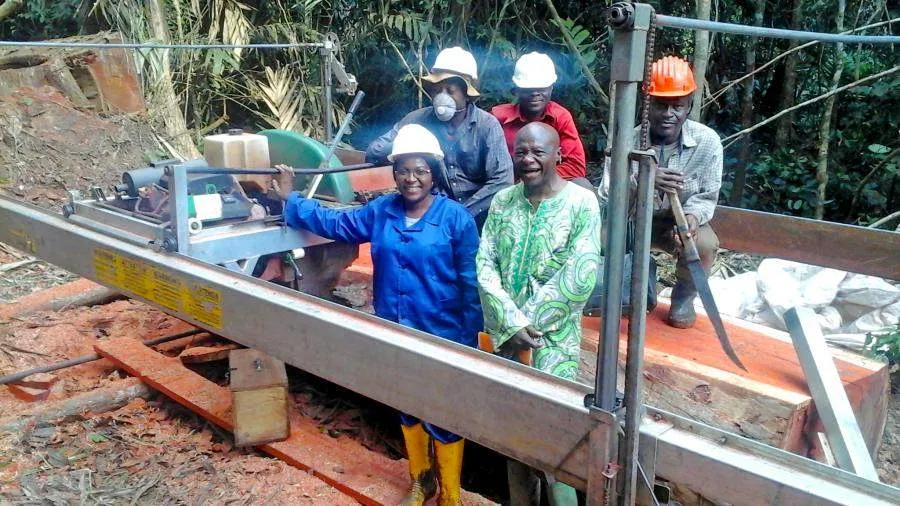
For forestry businesses to be sustainable, they must operate in harmony with their surroundings. This means more than just the natural ecosystems in which they are located; it also applies to the human neighbors with which they co-exist. It means that a certified business must contribute to the social and economic development of a community by offering its members opportunities for employment and compensating indigenous groups for the traditional knowledge that they share regarding forest species and operations. These are not only socially responsible steps, but they also benefit the environment. Providing jobs to local people, for example, can eliminate the incentive to engage in profitable but destructive activities such as wildlife poaching and illegal logging.
Boost income and profitability
Sustainable forestry should have a positive economic impact on its practitioners. The steps that help a business earn certification are the same that require the active management of its forestland, teach employees how to work safely and efficiently, and reduce staff turnover, so it’s no surprise that these steps can also lead to economic growth. Despite the earnings variations reported, a study of 11 FSC-certified forestry enterprises around the world found that FSC-certified wood generated price premiums of up to 50%, and the enterprises that benefited the most tended to be community and small-scale producers in the tropics. And in Mexico, a large FSC-certified community forestry enterprise that received technical assistance from the Rainforest Alliance increased its production volume, while staying within the parameters for sustainable harvesting; created an additional 286 jobs (a 12 percent increase over the baseline); and earned a 10 percent price premium for the wood that it sold to a certified buyer.
